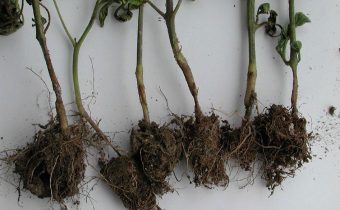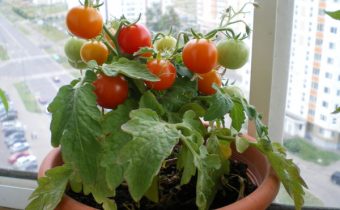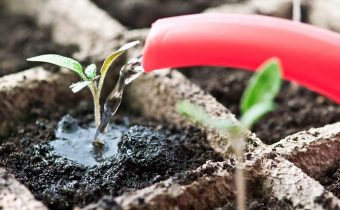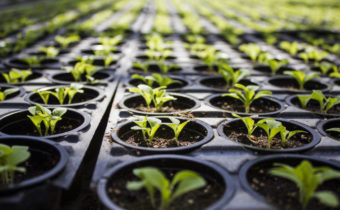Tomato picking: timing, technology and the need for a procedure
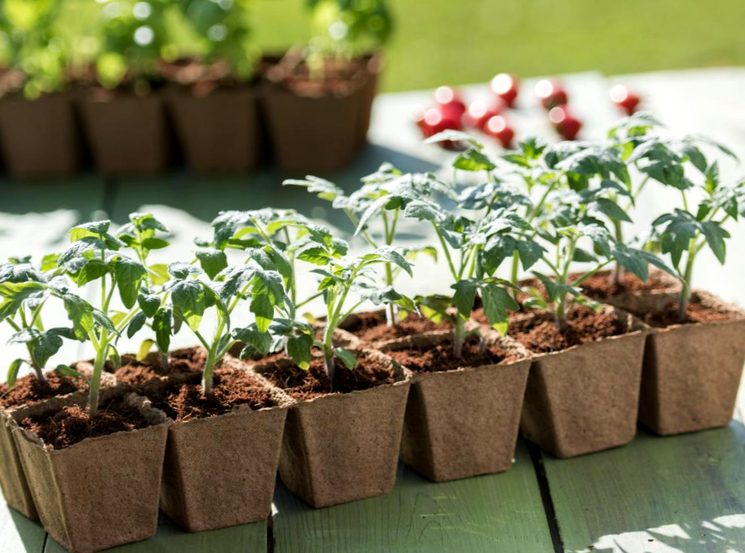
To get a good crop of tomatoes, timely picking (transplanting) of young seedlings is necessary. The job is to move the plant from the planting container to individual tanks of larger diameter (up to 12 cm) filled with balanced soil. During transplantation, the root rod is pinned 0.4 cm to prevent further deepening, stimulating the growth of lateral roots.
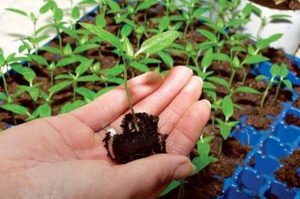
At what stage do the pick
The process is recommended when the tomatoes formed the first 2 leaves. They usually appear 7 days after sowing the seeds. It is best to dive 1.5 - 2 two-week plant, since at the 3rd week the root system is already developing, which is intertwined with the roots of the neighboring germ. Late picking complicates the task - the seedlings are injured, the stems break.
On a note!
Professional gardeners in growing seedlings use the recommendations of the lunar calendar.
Early picking helps to get a well-developed bush. The first tomato transplant is carried out carefully so as not to break a young sprout. However, it is possible to dive in later periods (4-6 first leaves), if the seed was initially sown in a deep container with maintained distance between seedlings.
Tobacco picking according to the lunar calendar in 2018
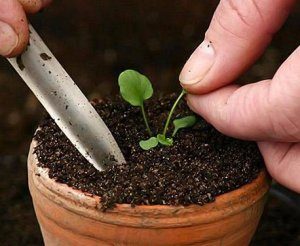 To obtain a high yield of tomatoes, lunar effects on plants are taken into account. There is a surge in the water level (rises). During this period, tomato begins to sap from the roots to the leaves and organs of fruiting.
To obtain a high yield of tomatoes, lunar effects on plants are taken into account. There is a surge in the water level (rises). During this period, tomato begins to sap from the roots to the leaves and organs of fruiting.
In the lunar calendar of 2018, favorable and unfavorable dates for planting and picking tomatoes were taken into account.
Sow tomatoes should be on the growing moon, taking into account the development of seedlings and the number of days from the day of sowing. Dates are scheduled in advance to determine the appropriate germination period.
| months | favorable numbers | unfavorable numbers |
| March | 1-5-6-7-8-15-19-20-21-22-24-25-26-27-29 | 13-14-15-17-18 |
| April | 4-5-6-11-12-13-14-18-20-21-22-23-24-25-26-27 | 9-10 |
| May | 1-2-3-4-9-10-11-18-19-20-22-23-24 | 7-8-28 |
| June | 5-6-7-8-15-16-17-18-19-28 | 3-4-29-30 |
| July | 2-3-4-5-15-16-17-20-21-22-31 | 1-28-29-30 |
Important!
Earthworks can not be carried out with a new moon and full moon. At this time, the plant stops the formation process.
Pros and cons of picks
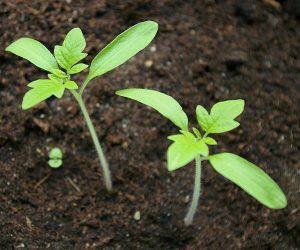 During transplantation choose healthy and strong seedlings - this is the main advantage of the pick. The effectiveness of the future harvest also depends on the replacement of the soil, which occurs during the pick-up process.
During transplantation choose healthy and strong seedlings - this is the main advantage of the pick. The effectiveness of the future harvest also depends on the replacement of the soil, which occurs during the pick-up process.
By applying this method in home gardening, vegetable growers bring fruit to life, and also improve and accelerate the formation of the root system of future shrubs. If the work is carried out in a timely manner, then the yield will be quantitative, the fruits will be healthy. The main thing is not to bring the seedlings to the state of emission of color in closed soils.
Positive aspects of picks:
- obtaining high-quality planting material, which ensures high yields;
- the selection rejects the weak and diseased shoots;
- the fibrous root system is created;
- elongated semiperony knees are eliminated (deepening of the germ in the new soil);
- The best conditions are created in the new tank (heat, light, humidity).
Negative sides of a picking:
- growth delay by several days;
- plant death during poorly performed work;
- possible mass infection of plants with a virus (due to unwashed hands).
Important!
Picks should be carried out carefully, for the preservation of the root system, abundant watering is required before sampling sprouts.
Preparatory activities
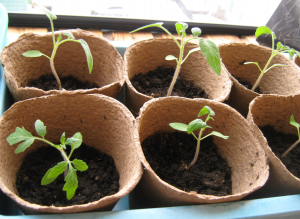 Before picking, for a couple of days, the seedlings are watered abundantly, then while removing it from the container, the ground is not heavy from overwetting. Soil weighting occurs when watering is carried out just before transplantation. Seedlings can be damaged due to ground severity.
Before picking, for a couple of days, the seedlings are watered abundantly, then while removing it from the container, the ground is not heavy from overwetting. Soil weighting occurs when watering is carried out just before transplantation. Seedlings can be damaged due to ground severity.
- The ground should be of high quality, so gardeners recommend adding a little biohumus, superphosphate, potassium sulfate to the ground before picking.
- Care should be taken of a suitable container for the subsequent development of the plant within 14-21 days.
- Planting soil should be disinfected with a solution of manganese.
- When choosing suitable pots, it should be noted that excess space leads to soil acidification and the formation of fungus. The first pick is carried out in small containers, the secondary transfer is allowed in large pots, together with a lump of earth from the previous container.
How to properly pick a tomato
Before conducting a picking, you should decide on a favorable date for such work, based on the lunar calendar.
- 3-4 hours before sampling the plants should be moistened abundantly, thus avoiding damage to the root system.
- In prepared containers (100-150 ml) fall asleep new soil. In these planting tanks, the plants will develop for another 2-3 weeks (until the subsequent picking).
- Sprout carefully dug with a lump of earth (a teaspoon, a pencil or a stick).
- Plants share. In order not to touch the sprouts with their hands, use a toothpick. The roots of the earth are not completely free.
- When you first pick, the spine is not pinch off, so as not to damage.
- Each stem is placed in a new well of cooked container.
- Planting is done, going deep to the cotyledon leaf (stimulation of the branching of the roots).
- The soil around the germ is crushed.
After the picking, the plants are watered. Re-transplanting into a large container is done after the appearance of 2 leaves.
Care after tomatoes after picking
The first 3 days seedlings pritenuyut, after which you can begin to make the plants on the street. Initially, seedlings are carried out for an hour, in the following days, the time spent in the sun increases.
For seedlings, it is important to maintain temperature: the first 3 days during the day - up to 22 degrees, at night - up to 18. After three days, the temperature drops: in the daytime to 20 degrees, at night - to 15.
After 10 days of adaptation, the seedlings need additional feedings, then every 2 weeks. Tomatoes are fed with a complex fertilizer or copper solution.
Preparation of the solution:
- water - 10 l;
- copper - 1 tsp.
The prepared composition prevents diseases of young sprouts of late blight.
The second time the plants are fertilized to obtain abundant green mass:
- 10 liter container with water;
- potassium sulfate - 12 g;
- superphosphate - 35 g;
- urea - 4 g
The third fertilization is allowed by nitroammofoska:
- a bucket of water - 10 liters;
- nitroammofosk - 1 tbsp. l
Seedlings are fed after the main irrigation. Watering is generous, but not frequent - the soil must have time to dry. Tomatoes from excessive humidity can develop a number of diseases (black leg, late blight).
Some gardeners for dressing seedlings after picking use organic fertilizers by spraying through a spray bottle:
- superphosphate - 1 spoon;
- hot water - 1000 ml.
The solution is kept for a day, after which it is diluted with 9 liters of water and sprayed on young saplings.
Conclusion
Thanks to a pick of tomatoes, gardeners manage to achieve good yields. When plants are transplanted, weak shoots are culled, which makes it possible to further develop the seedlings and form the root system. Strong planting material is able to give large and numerous ovaries.
During the cultivation of tall seedlings spend 2-3 transplants. Low-growing tomatoes just one dive.


